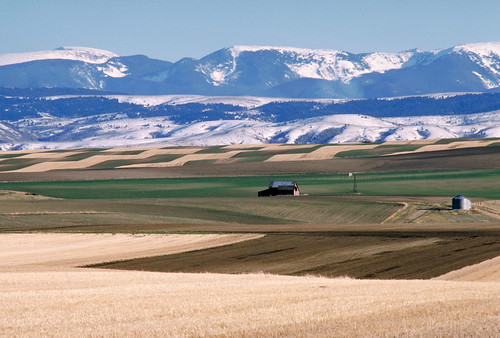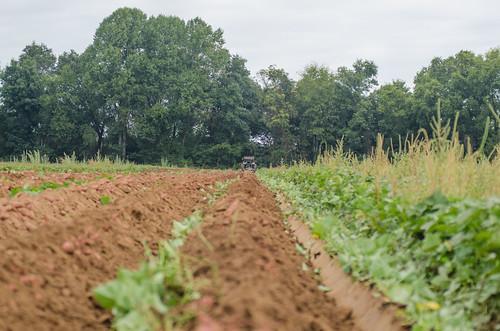
Good risk management tools aid in conservation efforts and help protect beautiful views like this for the next generation. USDA photo.
American producers know that crop insurance is a proven tool for managing the risks of farming. But many folks may not be aware that it also promotes sound practices that encourage environmental sustainability.
One of the primary reasons the Federal crop insurance program is good for conservation is that it requires producers to exercise good farming practices in order to be eligible for coverage. Good farming practices vary from crop to crop and from region to region, but follow the principle that the farming practices carried out are considered prudent and responsible by local extension agents and certified crop consultants. And this means planning for the long-term future, not just the current crop year.
One area where crop insurance encourages both maximum productivity as well as beneficial soil health is through requiring crop rotation when appropriate. Based upon the opinion of local experts, producers are often required to rotate crops in order to remain eligible for crop insurance coverage.
Another way that crop insurance maximizes productivity while improving the soil is by ensuring that crop insurance policies are consistent with the latest science based research on soil health. Cover crops for conservation have been around for a long time but are now being embraced by more farmers due to the increased understanding of the benefits of soil quality, nutrient cycles, erosion control, weed management, and soil water availability. RMA and the Natural Resources Conservation Service (NRCS) recently worked together to clarify guidance for producers who want to ensure good soil health and retain crop insurance. For crop insurance, producers can determine the recommended termination time for a cover crop by referring to the NRCS Cover Crop Termination Guidelines. This benefits both farmers with their planning option, as well as the land itself.

Good risk management tools aid in conservation efforts and help protect beautiful views like this for the next generation. USDA photo.
Finally crop insurance protects the soil through prevented planting coverage. Prevented planting coverage offers producers the guarantee they need so they do not take unnecessary risks with soil health by forcing a crop on land that is too wet or too dry. Because of prevented planting provisions farmers who may otherwise be forced to make risky farming decisions that can harm the soil are able to instead plant cover crops and protect one of our most valuable resources – our soil.
Risk management is about making sure farmers can put seed in the ground the year after a drought or a flood, but it’s also about making sure the soil health is maintained to produce a good crop year after year. It is difficult for a grower to consider investing in new (and more sustainable) production methods or equipment if they are uncertain whether they will make it through the next year. Crop insurance gives growers a degree of security that helps them to take a more long-term view of how they farm and the sustainability of their methods.

Good risk management tools aid in conservation efforts and help protect beautiful views like this for the next generation. USDA photo.
No comments:
Post a Comment
Note: Only a member of this blog may post a comment.